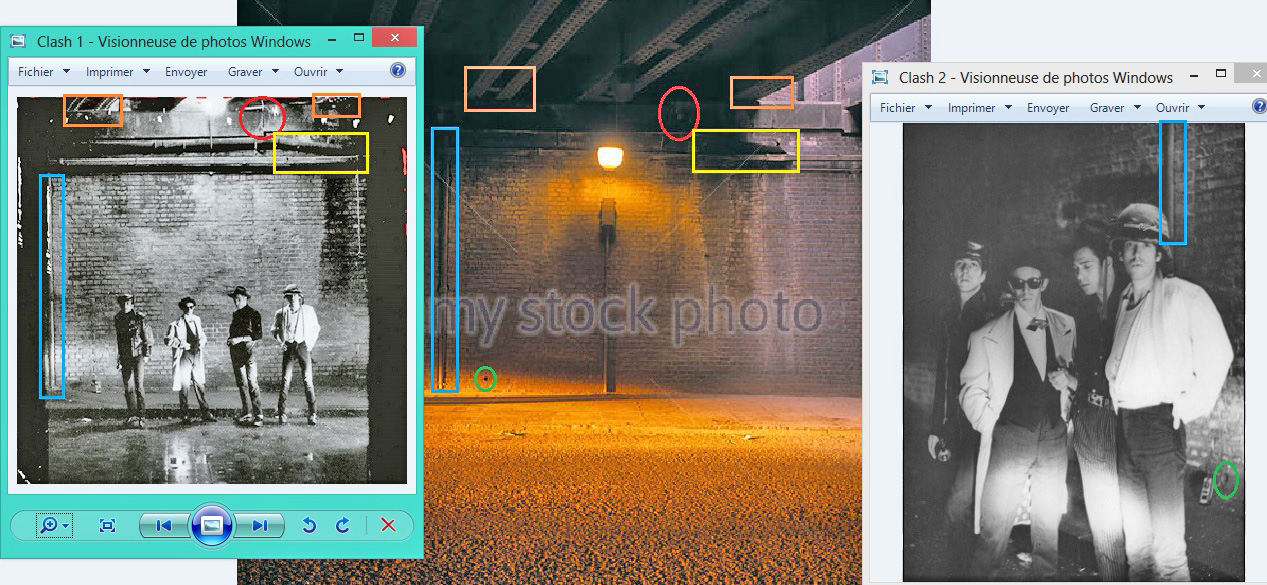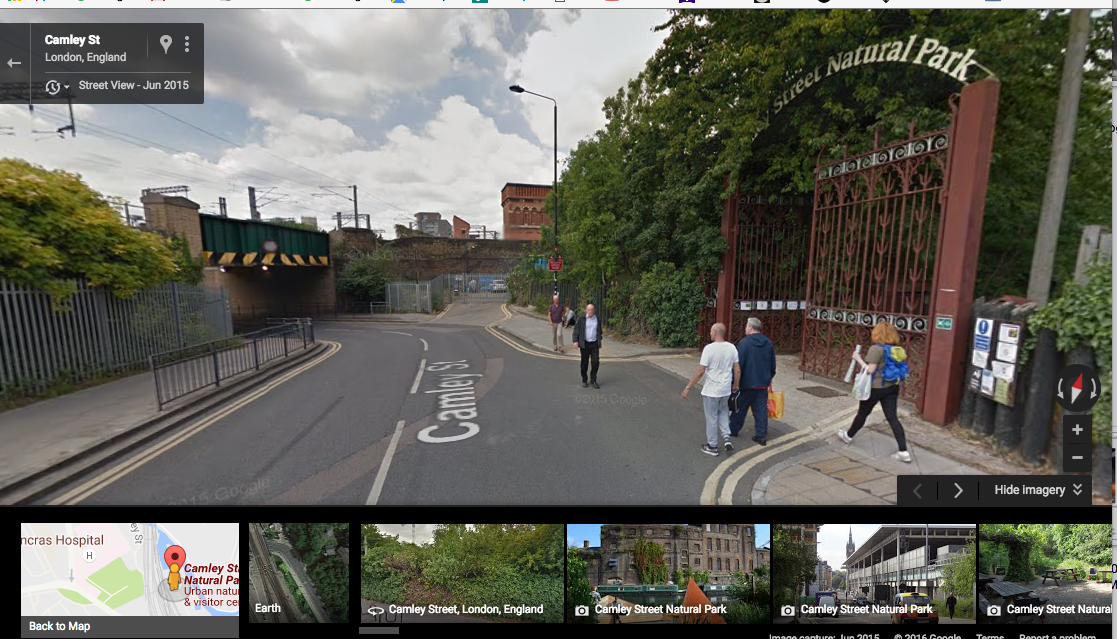 | |||
 | |||

|
SANDANISTA! - THE CLASH (1980) - ALBUM COVER LOCATION - Camley Street (under the railroad tracks from St. Pancras Station), London. Photo by Pennie Smith. The album cover. 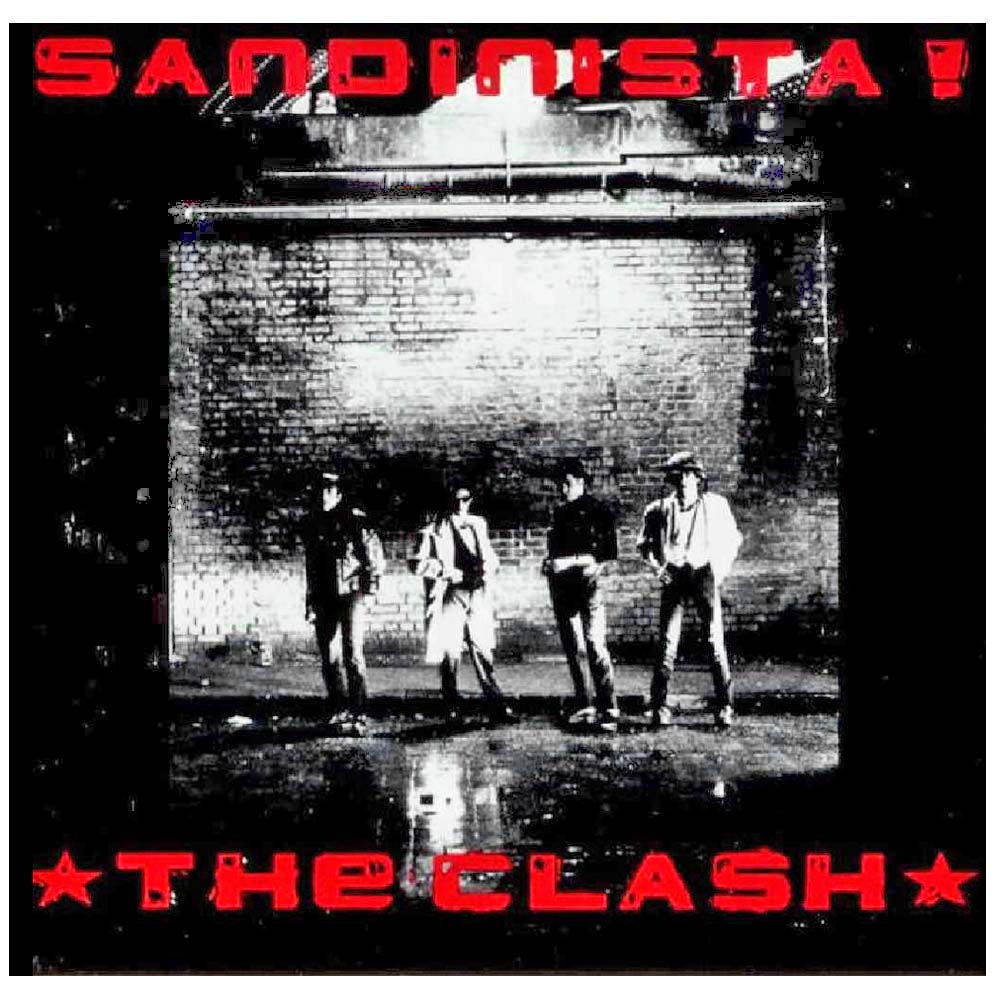
(photo by Pennie Smith) . . .and the album cover superimposed over the present day location, Camley Street, London. 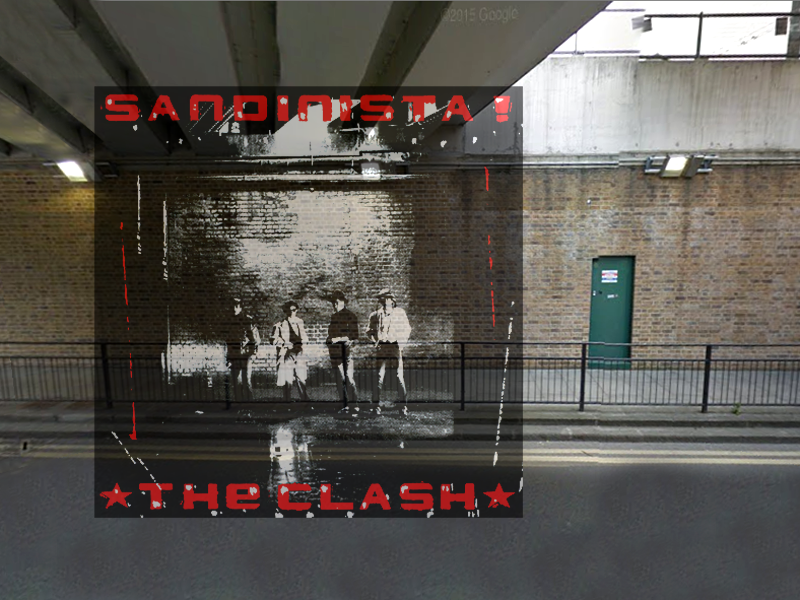
Learn more about the photo and the research methods PopSpots used to locate the exact location by reading the captions to the photos below. (cover photo by Pennie Smith) From Wikipedia: "Sandinista! is the fourth studio album by the English band the Clash. It was released on December 12, 1980 as a triple album containing 36 tracks, with 6 songs on each side. Anticipating the "world music" trend of the 1980s, it features funk, reggae, jazz, gospel, rockabilly, folk, dub, rhythm and blues, calypso, disco, and rap. The title refers to the Sandinistas in Nicaragua, a revolutionary movement who overthrew the Anastasio Somoza Debayle government in 1979. Sandinista! was ranked number 404 on the Rolling Stone list of "The 500 Greatest Albums of All Time" in 2003." It contains songs like, "The Magnificent Seven," "Hitsville U.K.," and "Career Opportunities."
A cropped version of the original shot by Pennie Smith. 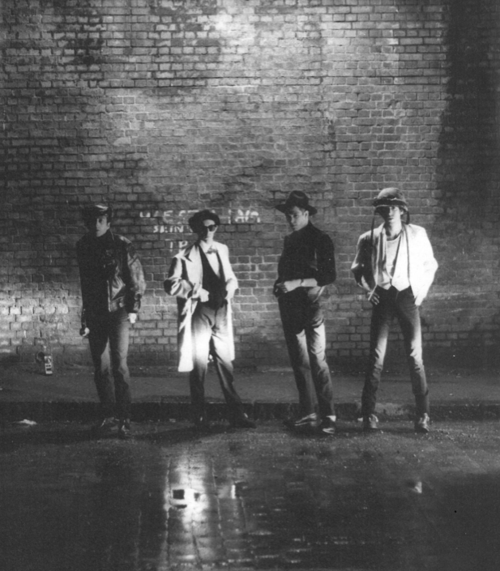
(photo by Pennie Smith) A side-view, close-up of the band. They are standing in the same spot as the previous picture, as you can see by what looks like a radio against the brick wall behind them in each picture. (photo by Pennie Smith) In looking for the location of the photo, I ran "pennie smith sandinista" through Google, then limited the search results just to "books," via the drop down menu above the search results. In doing so, I ran across across a book that indicated that the that the cover photo had been taken behind King's Cross Station in London. (The book is titled: The Clash: The Return of the Last Gang in Town by Marcus Gray.) 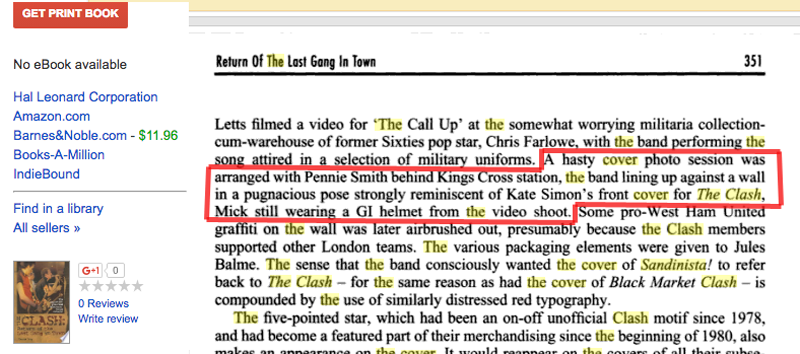
So I found where King's Cross Station was on a map. It's located in north central London, near Camden Town, a neighborhood with a long rock history. 
Here's a close-up map. King's Cross Station is also located next to another train station named St. Pancras Station. These stations are the London terminus for trains headed to the north of England. Harry Potter fan's will remember King's Cross Station as having the secret platform 9¾ as the starting point of the Hogwarts Express to the Hogwarts School of Witchcraft and Wizardry. 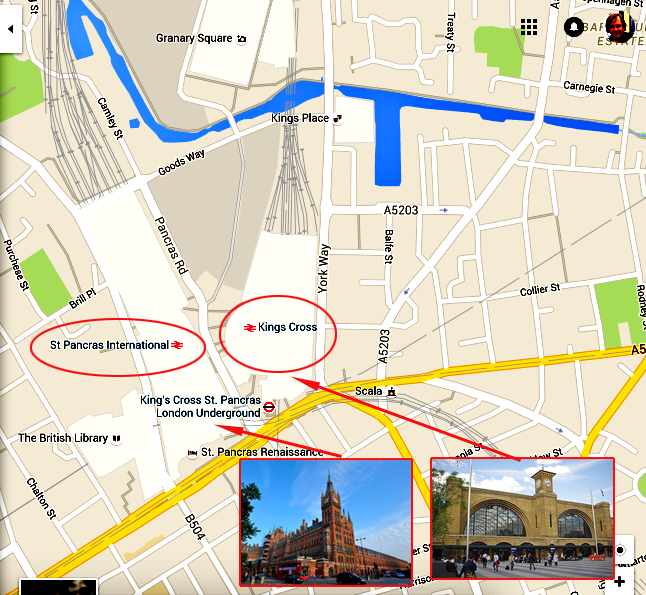
Then, using Google Street View, I wandered around King's Cross Station until I came to this street, York Way, on the east side of the station. Though the book had said that the photo was taken at the "back" of the station, I figured this was close enough. Plus the large brick areas looks like a match for the cover. 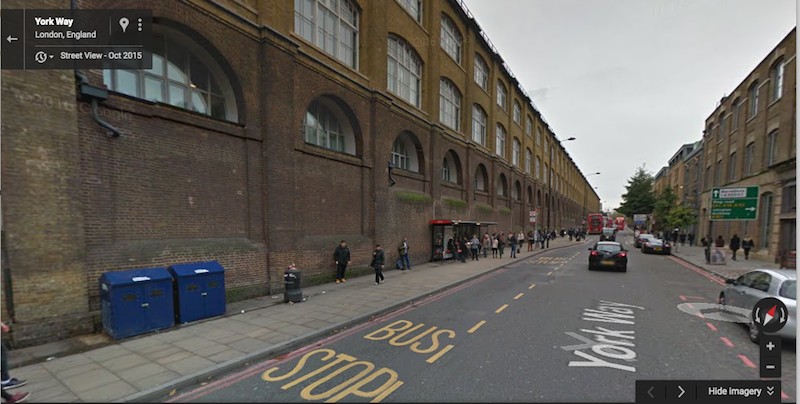
Here's a picture of the same place from a long time ago. 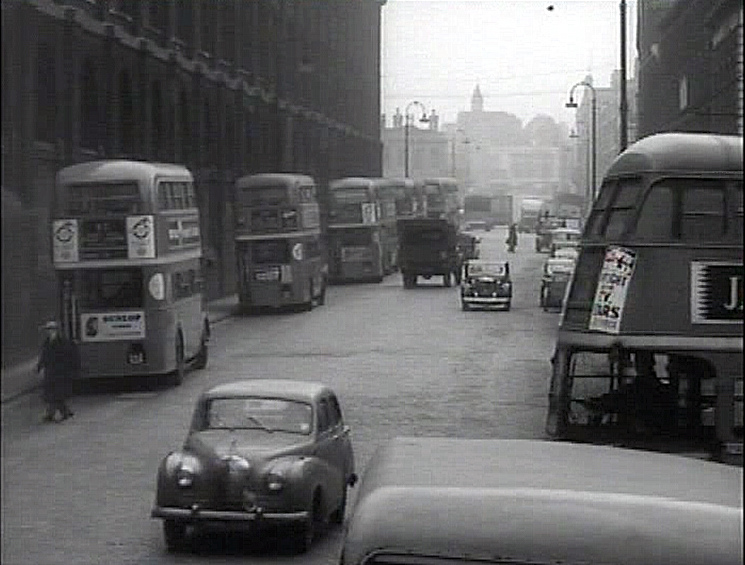
I research a lot with Marie Fotini, a photo locations scholar (with an emphasis on Dylan photos), who lives in France and is PopSpots Chief European Correspondent. I wanted her opinion to see if the wall matched up. After looking the length of the wall, she said that it didn't. She also said that in the area behind the words at the top of the photo were beams that seems to be perpendicular to the brick wall. So she looked for some. In her first go-round she came up with this photo from inside the terminal. Along the beams in each picture were a lot of round rivet tops. 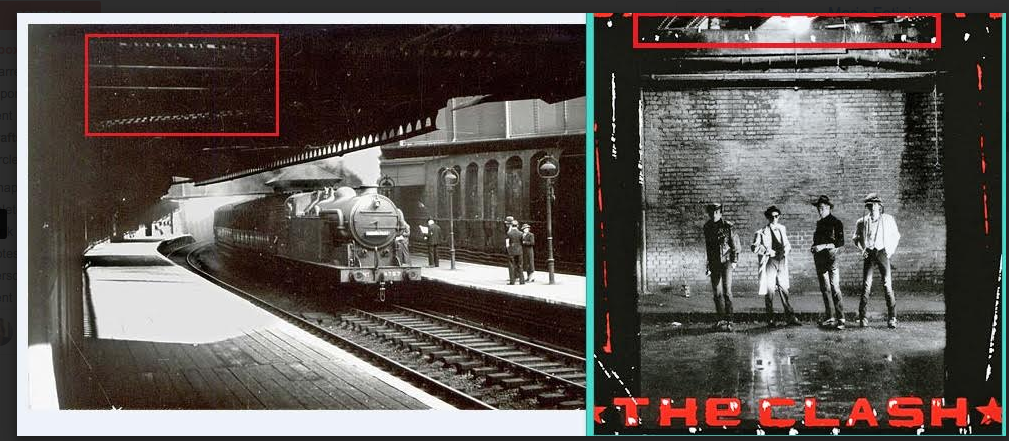
Then she discovered another part of the terminal that had more pronounced perpendicular beams (circled) . But ultimately, these also didn't match up with the cover. 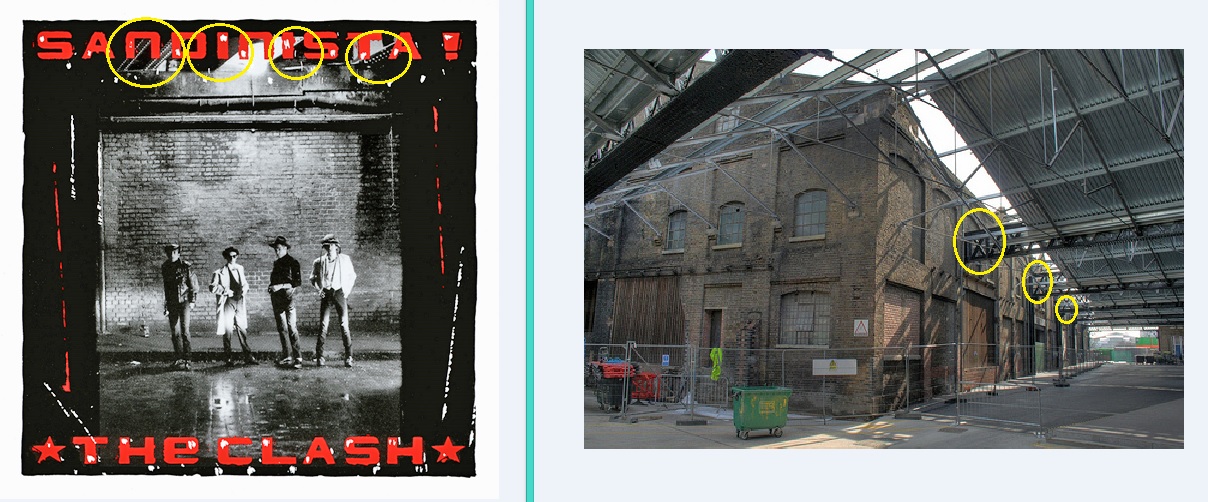
This photo didn't match up either, though the lighting was similar. 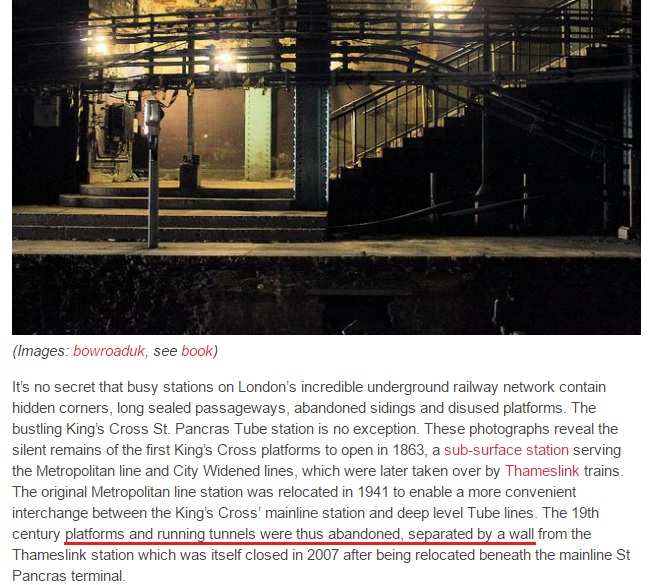
Then, in her late-night searching, by way of Google Images, she ran across a CLASH fan website, run by Don J. Whistance (www.theclash.org.uk) which said the the photo was taken "behind King's Cross station amongst the Railway arches with small workshops nearby. (my italics)" Someone working with Don had evidently looked into this site before, so we agreed that Marie should look for the "railway arches with small workshops" near the station. 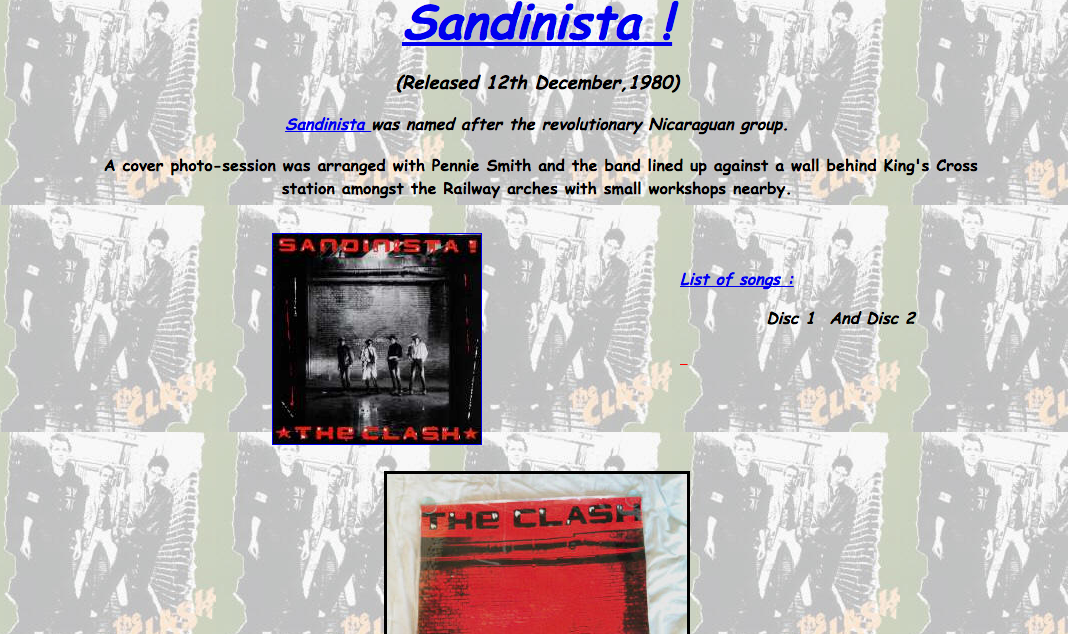
(website by the clash.org.uk) These were the photos on that site that were suggested as being near the site of the photo, perhaps in the tunnels behind them. So Marie went looking for old photos showing what was beyond these dark entrances. What we were looking for was a photo of the original site, before it had changed, so we could match the photo perfectly with its present day location. 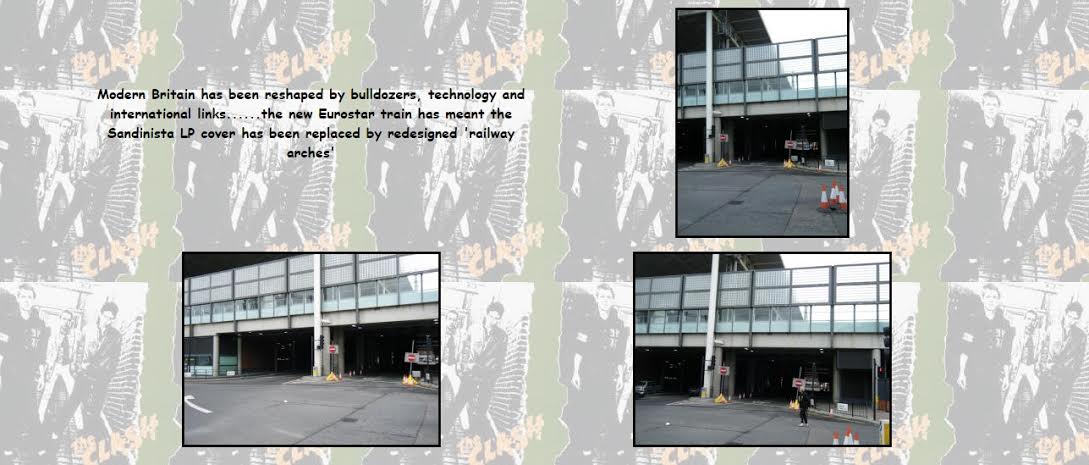
(website and photos by the clash.org.uk) But, in scanning through hundreds of photos of the railroad yard on sites like Google, Getty, and Alamy, Marie chanced up upon this beautifully composed photo, almost Magritte-like in its lighting, that showed the same type of brick wall we were looking for, with the addition of PERPENDICULAR METAL BEAMS above that we were also looking for. Had she found the holy grail of the Sandinista album cover search? The one that gives proof to the location? It seemed too good to be true. Where was it? 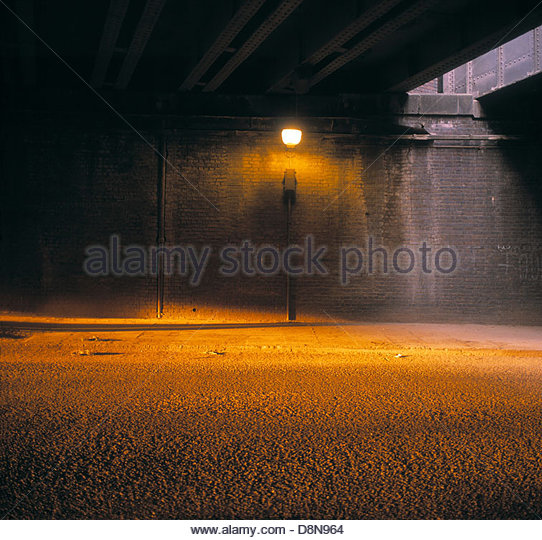
It turns out it was a stock photo by John Heseltine, distributed by the Alamy Stock Photo Agency of "a railway bridge on Camley Street behind King's Cross station, North London." And it was taken "in 1985 before redevelopment began." That put it closer to when the original photo was taken, in 1980, than to the present day, which was good, as there would be more of the old details. Here it is again, just so that you can see that it was taken in the daytime, with yellow late afternoon sunlight coming in from the left, and light coming in from a gap to the sky in above right. The site where it was located turned out to be about 1/4 mile further from the station than Don's photos, but the photos had been helpful in leading on onward, so thank you Don! 
So did the Camrey Street location match up with the cover? Here's an aerial photo of the area, with the "railroad bridge" over Camley St. circled (actually Camley St. is more like a tunnel there). So, yes, they are "behind King's Cross" as the book said, but they are technically behind San Pancras Station. Close enough.
This is what that area of Camley Street under the tracks, as pictured in the stock photo from 1985, looks like now. 
The brickwork along the wall had all replaced. So Marie focused on trying to match up the Sandinista picture with the elements in the stock photo of Camley Street. 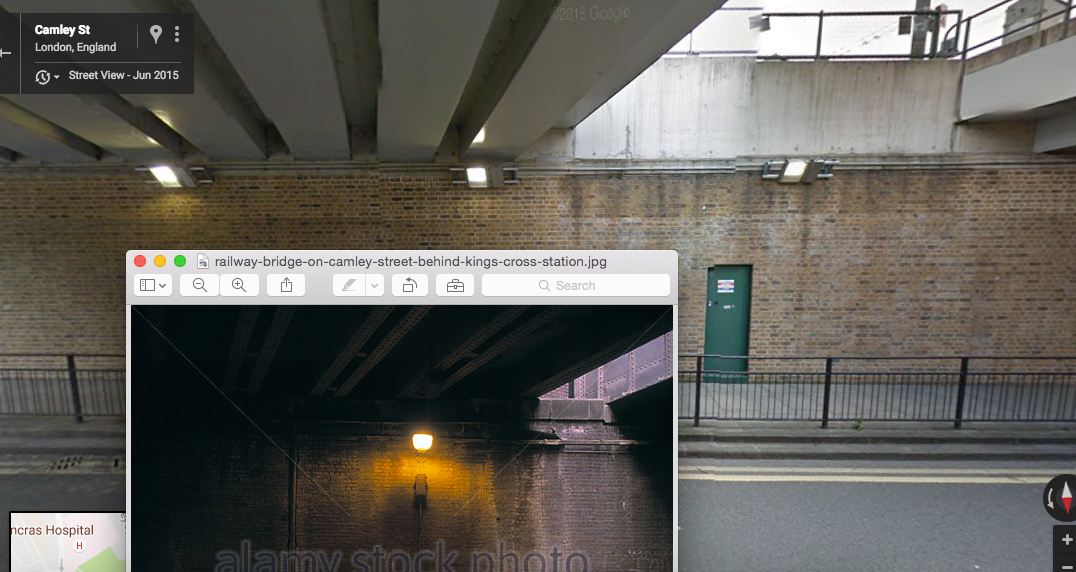
Here were some things that matched up the cover with photo: Blue Box: Exact pipe on the left. Also matching joint where two pipes came together. Red Box: Horizontal Pipe comes in at right place. Yellow Box: There was a one foot wide railing running along the wall. Also horizontal pipes just below it. Green boxes, right side: The bricks in both pictures were indented and cast a shadow. In addition some individual brick makings matched up. Green circle bottom left. There's a hole in the wall in the same place in both pictures. 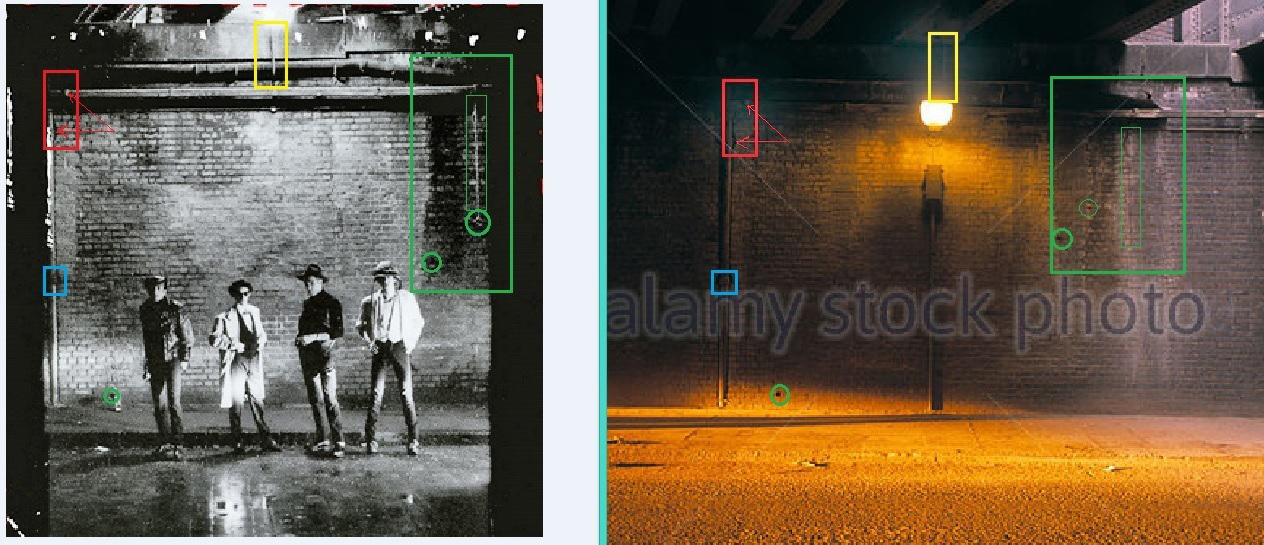
Looking more closely on the hole in the wall at bottom left, you can see that they are both the same distance from the pipe in each picture. There's a slight difference in their height from the ground, but that's probably because of a change in the height of the sidewalk built in the 5 years after the photo was taken. 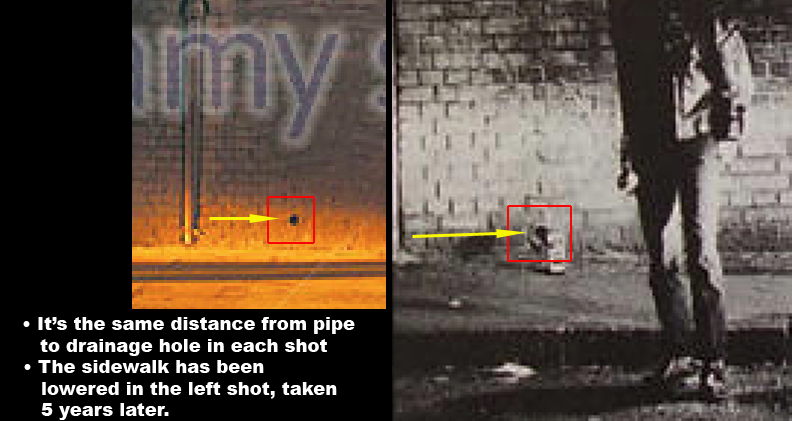
At that point, I had found a more vertical picture of the group and sent it to Marie. (The shot was a little out of focus, so I digitally superimposed a more focused shot of the band in the center.) This picture showed more of the perpendicular beams above them. Did they match up? 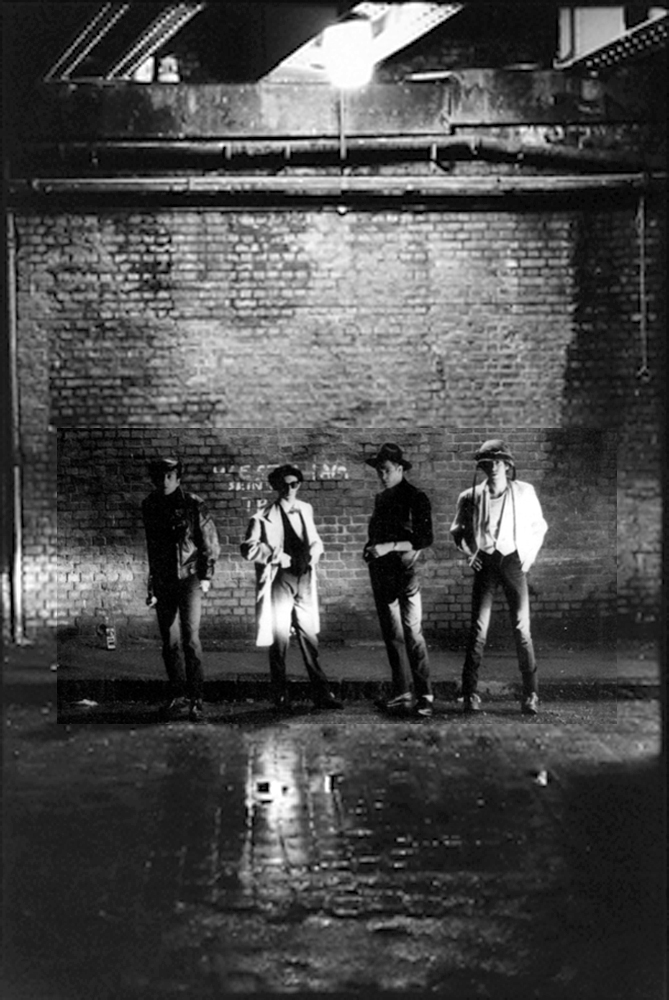
(photo by Pennie Smith) Marie emailed back with more correspodences, as shown in these colored boxes: Blue box: Pipes match. Orange Box: Beam matches. Red box: Joint matches. Orange Box: Joint with rivets match. Yellow Box: Crevice in brickwork matches. She also showed where the pipe was behind them, when the photographer moved to the right hand side of the picture, and taken them from that angle. (By the way, if you want to see these photos larger, drag them onto your desktop. I'm making them fit to 800 pixels wide via HTML.)
At this point I sent the photo to my brother, a lighting expert, to ask him why there were no shadows from the photographer's flash on the back wall. Also, if the group were illuminated from above, why were there no shadows on the two bandmembers on the right? He said the shot was lit from 2 sources: an overhead light, and also from a car's headlights from the right. He said the brightness of the car light obliterated the shadows that would have been on the ground beneath the band members on the right. He also said the photographer took the shot at night, as there was no bright sunlight coming in from the space in the ceiling to the sky. 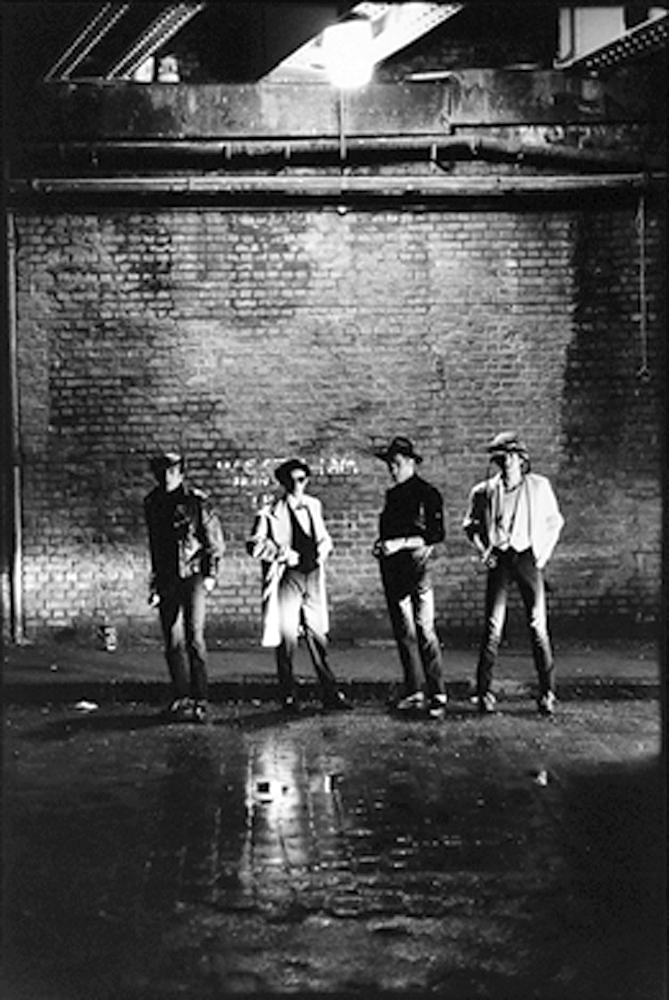
(photo by Pennie Smith) You can see the open space that goes through the tracks from these old-and-new overhead shots taken years apart. 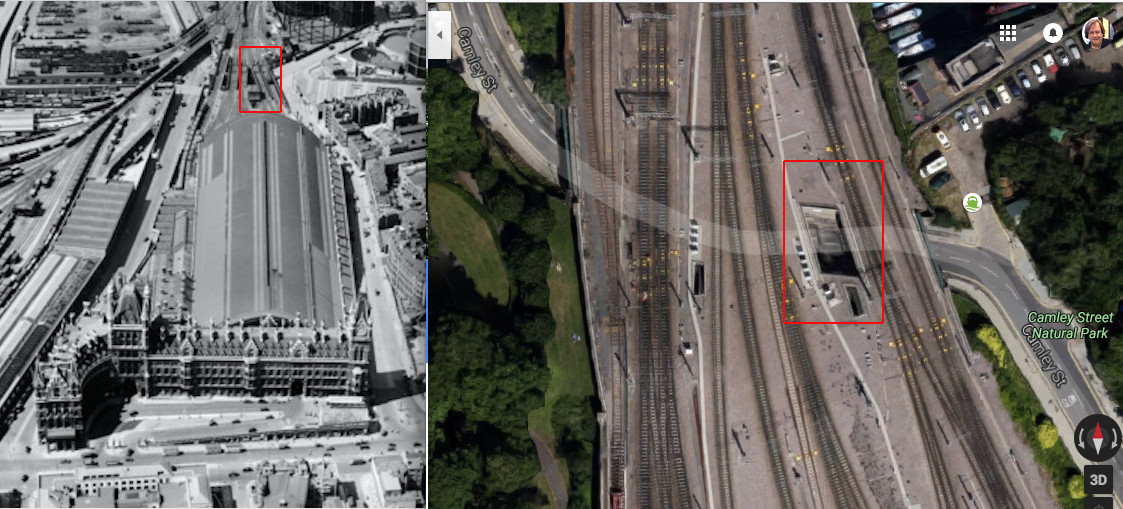
The photoshoot took place in the underpass to the left in this photo.
Here is the entrance to the underpass. The light on the walls comes from the opening overhead.. 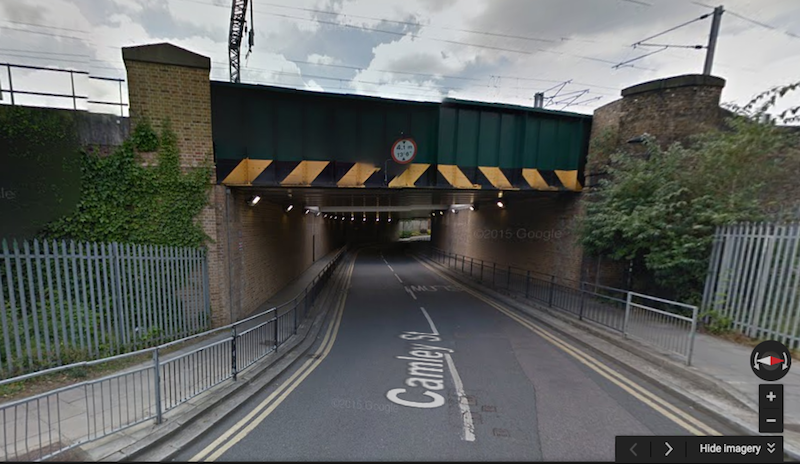
Here's what the cover looks like superimposed on the 1985 stock photo by John Heseltine, taken 5 years after the albums's release Interestingly, Pennie Smith (in 1980) and John Heseltine (in 1985) were attracted to the same urban scene that was both gritty yet beautiful. A contrast that creates a visual "clash." 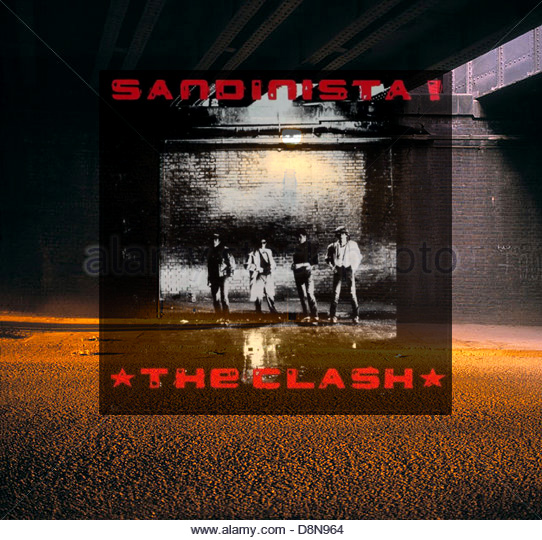
(cover photo by Pennie Smith) And here, again, is what the cover looks like against the background from today. Thanks for visiting. Gotta run - London calling! 
(cover photo by Pennie Smith) 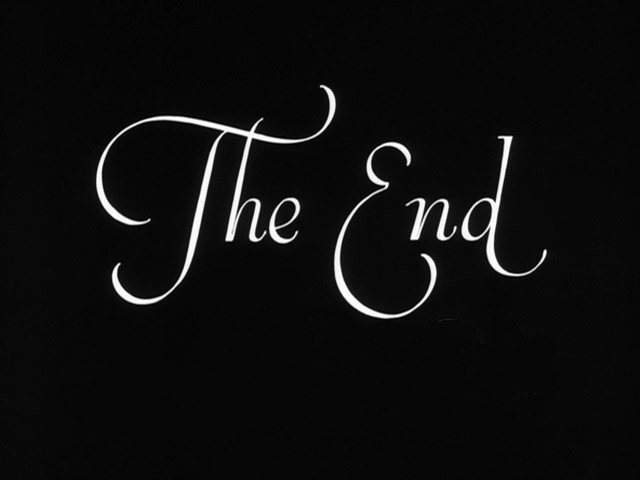
|
||


